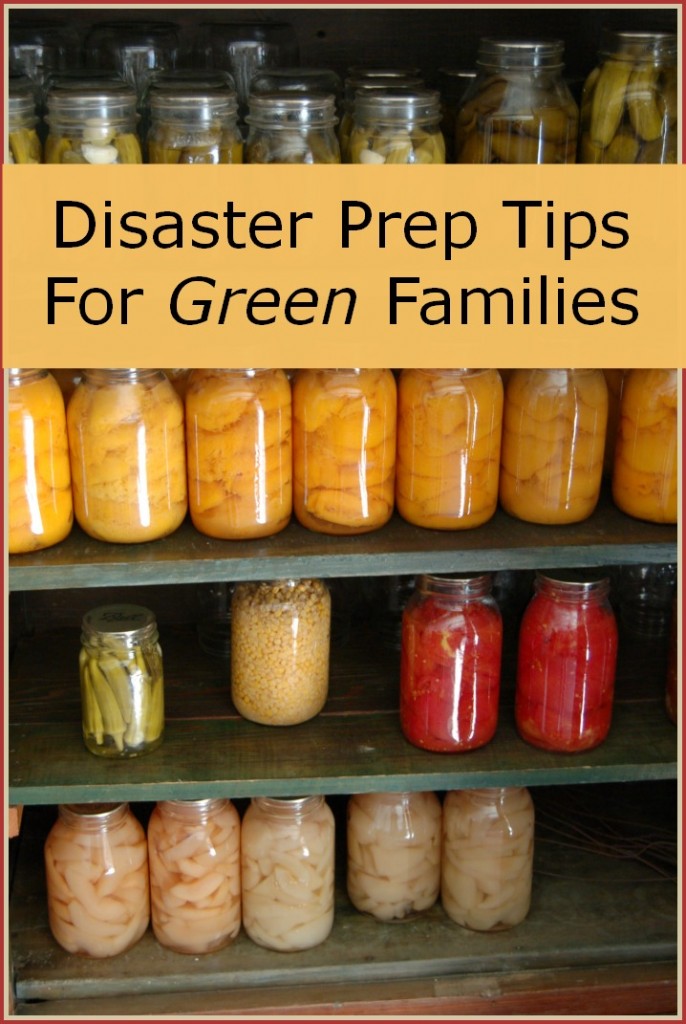Author: Katie White
Sustainable, responsible ways to keep your family ready.
No matter what level of green you might be, you need to prepare yourself and your family in case a natural disaster strikes your area. Just because you’re living more harmoniously with the earth already, doesn’t mean you’re ready for the worst.
I’ve compiled some tips and ideas on keeping you and your family safe and prepared for such an event; the most important safety tips are environmentally-neutral, but there are several ways you can consider sustainability as you prepare.
1. Evaluate risks
There are two parts to this; the first is to consider ‘External Risks’. Essentially, you need to be familiar with the risks inherent to where you live; these include tornados or earthquakes, floods, and landslides, as well as man-made risks like terrorism, dam’s breaking, or power-plant explosions.
You also need to consider ‘internal risks’, like making sure your home won’t be prone to leaking chemicals (fuel, etc.), or that there is sound structural integrity, especially in the case of a natural disaster. Keeping your home as chemical-free and energy-efficient as possible will render it safer.
2. Make plans
After you evaluate the most probable risks that affect your family, begin to make plans, and make sure everyone knows those plans. Plans should include meeting places should your family be separated during a disaster, as well as phone numbers for emergency contacts your family knows.
Escape routes would be another key ingredient to this plan, you’ll need to have several options in case some are clogged with traffic, wiped away from the disaster, or otherwise rendered unusable.
Think of what to do in case of a medical emergency, and what actions are best to survive a certain disaster (like ‘duck and cover’ or ‘drop, cover, and hold on’ for earthquakes). Having an easy-to-remember plan can be vital in the hectic moments during and after a disaster, so start thinking about it now to keep your family safe.
3. Prepare to Shelter in your Home
You’ve likely already started to make your home a more earth-friendly habitat, many of which probably help you in case of various disasters, allowing you to ‘shelter in place‘.
Many of you garden at home, and if you don’t, this is another reason to start. The power may be out, or local stores might not be an option for food anymore, so having a garden can provide you and your family with fresh food depending on the season (creating food storage from your garden is also a great idea).
You probably also have a water purification system to reduce your families use of plastics—this can be vital in case of minor water contamination issues (storing water from your purification system during times on non-emergencies is also essential).
4. Prepare if you need to leave
In some instances, your home may not be safe to inhabit before, during, or after a natural disaster. We already mentioned your garden at home and storing your purified water, those will be handy here as well. Prepare your garden supplied food storage, and keep both your food and water portable.
Also remember to keep a 48-hour pack of clothing and medicine ready to go at all times. Keep bikes tuned and camping/hiking gear in peak condition as those may become your mode of travel and abode.
5. Know how to do more with less
You likely are already doing this to some extent, using less electricity, purchasing less and reusing and reducing more than ever—but keep in mind that you may have to do with even less at some point in the future.
Should the power go out, there are plenty of green ways to power your essential items, like portable solar power, or human-powered devices to keep your cell phone charged, or cold items cold (like insulin shots).
camping trips are a great way to teach environmental responsibility while ‘roughing it’—and in the event of a serious disaster, those skills will come in handy.


